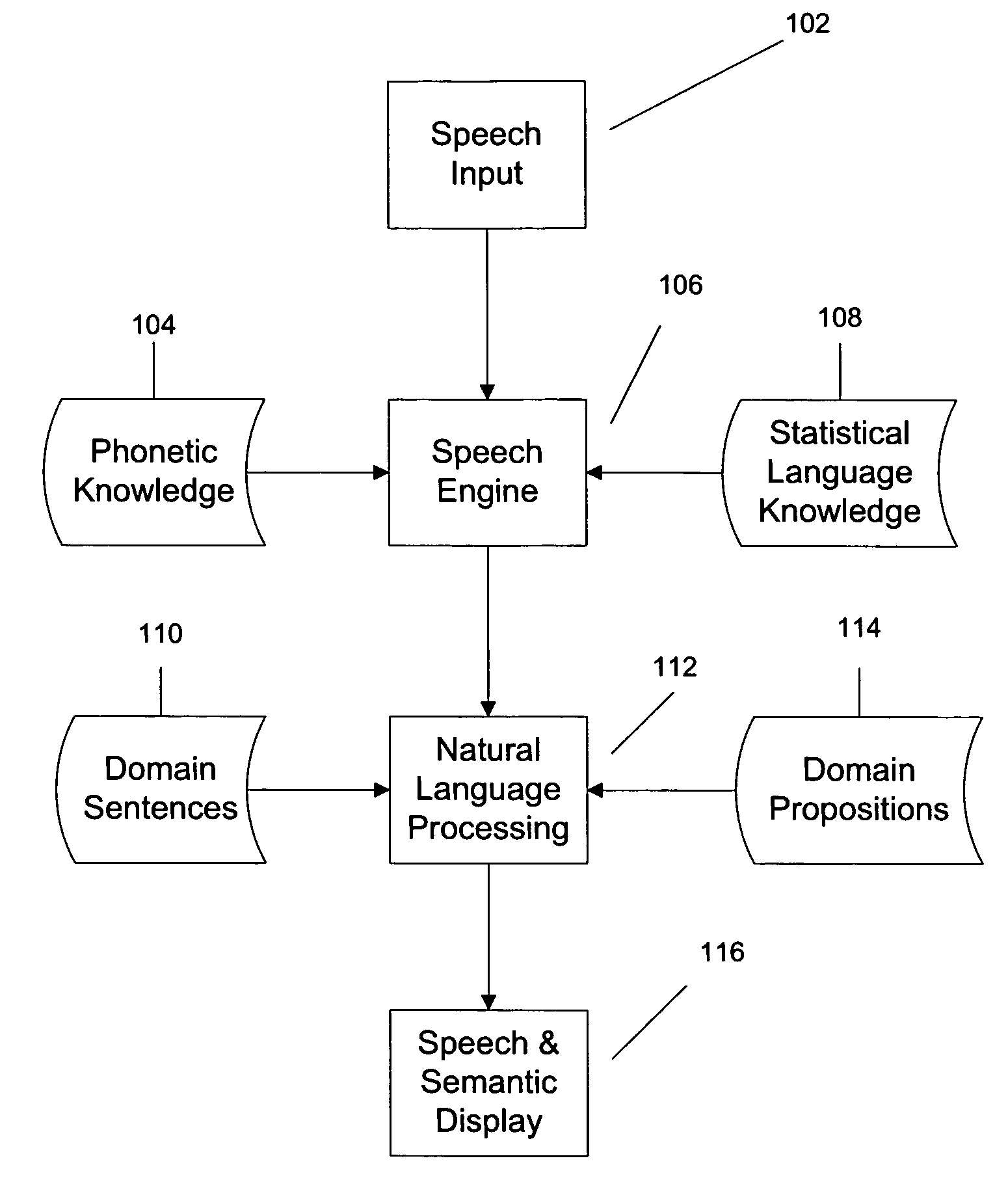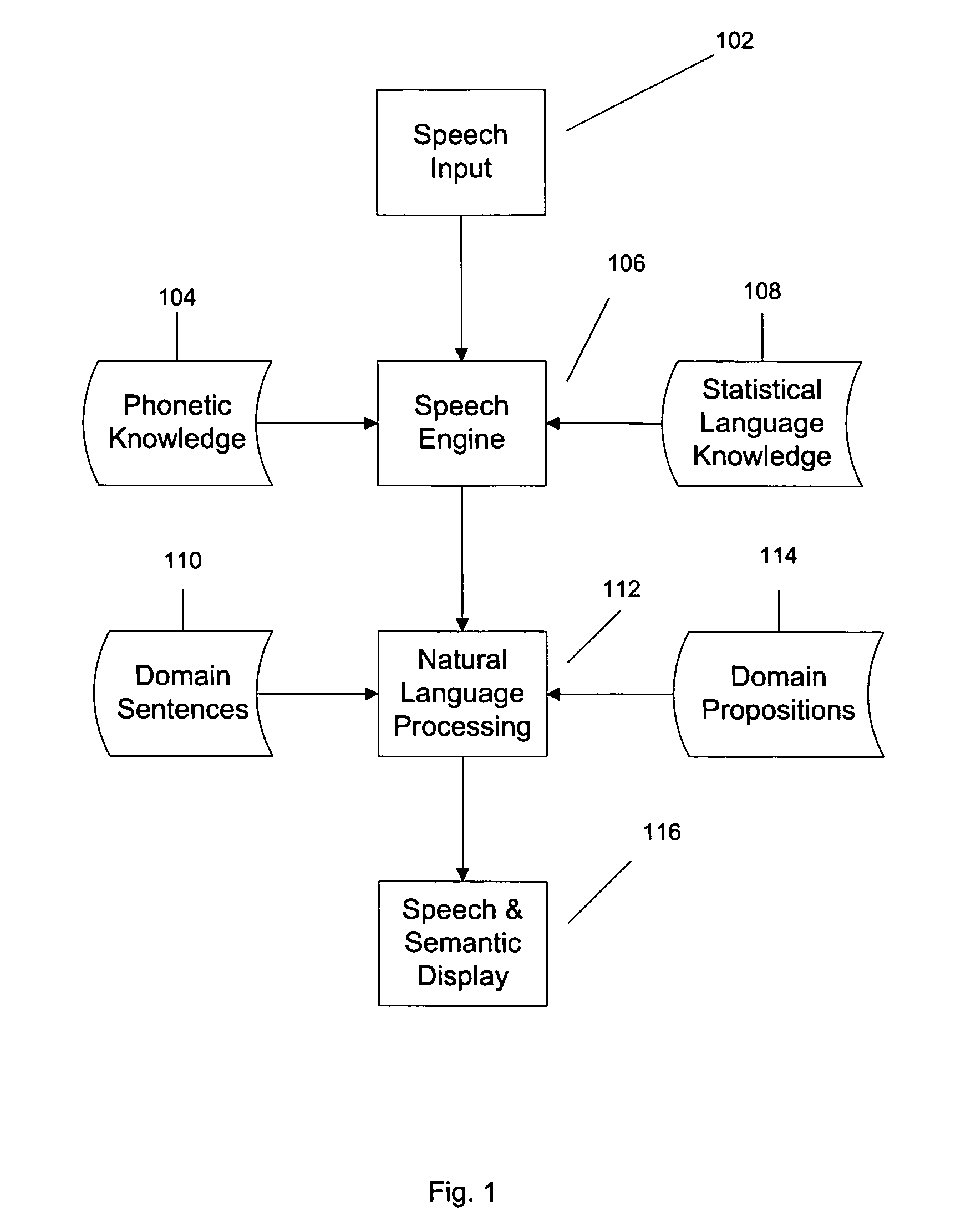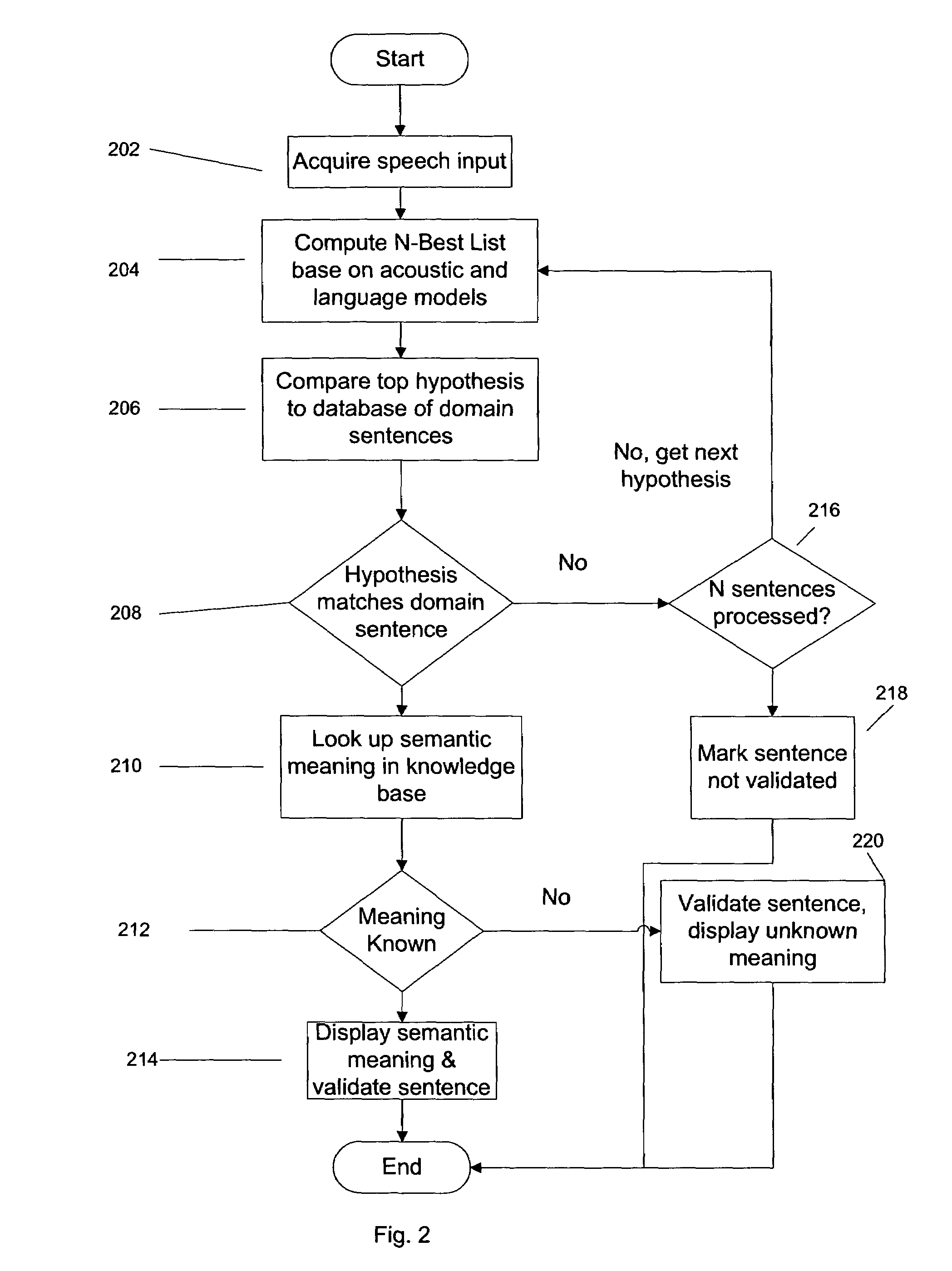Process and system for semantically recognizing, correcting, and suggesting domain specific speech
a domain-specific speech and semantic recognition technology, applied in the field of processing spoken language, can solve the problems of difficult development of semantic recognition algorithms, low quality of top-rated hypothesis, and low quality of statistical word string hypotheses
- Summary
- Abstract
- Description
- Claims
- Application Information
AI Technical Summary
Benefits of technology
Problems solved by technology
Method used
Image
Examples
Embodiment Construction
[0033]The present invention employs several knowledge base components described in application Ser. No. 10 / 844,912 titled, “Process for constructing a semantic knowledge base using a document corpus, herein referred to as “corpus based knowledge construction”. Briefly, that invention describes the steps for mapping the set 5 of sentences in a corpus of related documents, to the set M, of unique meanings or propositions in a knowledge domain to form a knowledge base. A knowledge domain is the semantic knowledge contained in a large corpus of related documents from the domain, for example the semantic knowledge in 500,000 radiology reports. The fundamental unit asserted in the semantic knowledge base is a proposition expressed as a declarative sentence, conveying the underlying meaning of a document sentence. Propositions are distinct from the sentences that convey them, although they are related. For example, the sentences “The chest x-ray is normal” and “The chest x-ray is within no...
PUM
 Login to View More
Login to View More Abstract
Description
Claims
Application Information
 Login to View More
Login to View More - R&D
- Intellectual Property
- Life Sciences
- Materials
- Tech Scout
- Unparalleled Data Quality
- Higher Quality Content
- 60% Fewer Hallucinations
Browse by: Latest US Patents, China's latest patents, Technical Efficacy Thesaurus, Application Domain, Technology Topic, Popular Technical Reports.
© 2025 PatSnap. All rights reserved.Legal|Privacy policy|Modern Slavery Act Transparency Statement|Sitemap|About US| Contact US: help@patsnap.com



